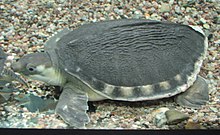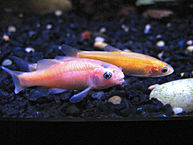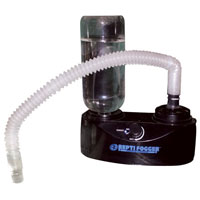Turtles and tortoises often appeal even to those who would not dream of keeping – or allowing their children to keep – a snake or lizard. Their good reputation as pets is due in part to generally amiable natures and the degree of responsiveness they exhibit to people. But the needs of these interesting reptiles are not always well-understood by first-time owners, and choosing between turtles and tortoises, and among the individual species, can be a daunting task. Today we’ll look at what is involved in turtle and tortoise ownership, so that you can decide which would be best for your particular situation. As always, please post any specific care questions you may have below.
Please Note
The terms “turtle” and “tortoise” are used interchangeably for some species, and in different ways throughout the world. Most commonly, “turtle” refers to semi-aquatic and aquatic animals, while “tortoise” is used for those that spend their time on land.
The following points are general in nature. Please see the linked articles and post below for detailed information on the care of individual species.
Space Requirements
Turtles and tortoises need far more living space than most people realize, and many grow faster and larger than one might expect.
Among turtles, the commonly-kept Red-Eared Slider is a perfect example. Females (the larger sex) will very quickly reach 8-12 inches in length, at which point they will require a 75-100 gallon aquarium, a commercial turtle tub, or a wading pool. The smaller males, as well as some Musk, Mud, Map and Painted Turtles, might (depending upon the species) get by in a 20 to 55 gallon aquarium. Although hard to resist as hatchlings, Common Snapping Turtles and most Softshells grow very large, and they can be dangerous.
Tortoises generally need even more space than do turtles, with nearly all requiring a custom-built cage or fenced outdoor area. In addition to being very active, tortoises fare poorly unless provided with a thermal gradient. Thermal gradients, critical to good health, allow tortoises to regulate their body temperature by moving between hot and cooler areas (small cages quickly take-on the temperature of the basking site). Aquariums are ill-suited for use as tortoise homes, as they do not provide the ventilation (or space) required by most.
Life Support Equipment
All tortoises and turtles must have access to a source of UVB radiation, a heated living area, and a hot basking spot. For most owners, this translates into the purchase of UVB bulbs and fixtures, basking bulbs and fixtures, heat mats and ceramic heaters (tortoises) and aquarium heaters (turtles). Expenses can be trimmed somewhat if one keeps Mud and Musk Turtles, or those few other aquatic species that can get by without UVB if provided a proper diet.
Aquatic turtle tanks must also be equipped with powerful filters. Housing your pets in easily-dumped plastic bins eliminates the need for filtration, but this option has drawbacks in terms of visibility and aesthetics.
Tortoises hailing from deserts and other arid habitats are susceptible to respiratory infections in even slightly-humid environments. Therefore, a de-humidifier may be essential.
It is in the area of nutrition that turtles and tortoises diverge most noticeably. With few exceptions, turtles are the easier of the two groups to maintain. Zoo Med and other commercial turtle pellets, earthworms, sun-dried or fresh shrimp and several other easily-obtained foods will keep most in good health and breeding condition. Nearly all, however, should be provided with whole minnows and similar fishes on a regular basis (these are the best source of calcium and other important nutrients).
Healthful tortoise diets, on the other hand, can be difficult to arrange, and the needs of the various species differ greatly. Poor nutrition is the leading cause of death among captive tortoises. Please see the linked article and post any questions you may have below.
Workload
I receive many questions and complaints centering on the amount of work involved in keeping turtle aquarium water clean. Turtles are messy feeders, and very hard on water quality. Powerful filters help, but partial or total water changes will still be necessary (and filtration medium needs frequent replacement).
Land-dwelling tortoises are fairly simple to clean-up after, unless one has a large collection or concentrates on the giants of the group. For example, a pair of 80 pound African Spurred Tortoises (“Sulcatas”) under my care at a zoo brought back memories of cleaning rhino pens as a fledgling animal keeper decades ago!
Human Health Considerations
Salmonella bacteria are likely present in the digestive tracts of all turtles and tortoises. Handling an animal will not cause an infection, as the bacteria must be ingested. Salmonella infections are easy to avoid via the use of proper hygiene, but are a serious concern for children and elderly or immune-compromised adults. Please speak with your family doctor and see the article linked below for further information.
Further Reading
Caring for Red-Eared Sliders, Painted and Map Turtles
 That Reptile Blog – Reptile, Amphibian and Exotic Pet Care and Information
That Reptile Blog – Reptile, Amphibian and Exotic Pet Care and Information


























